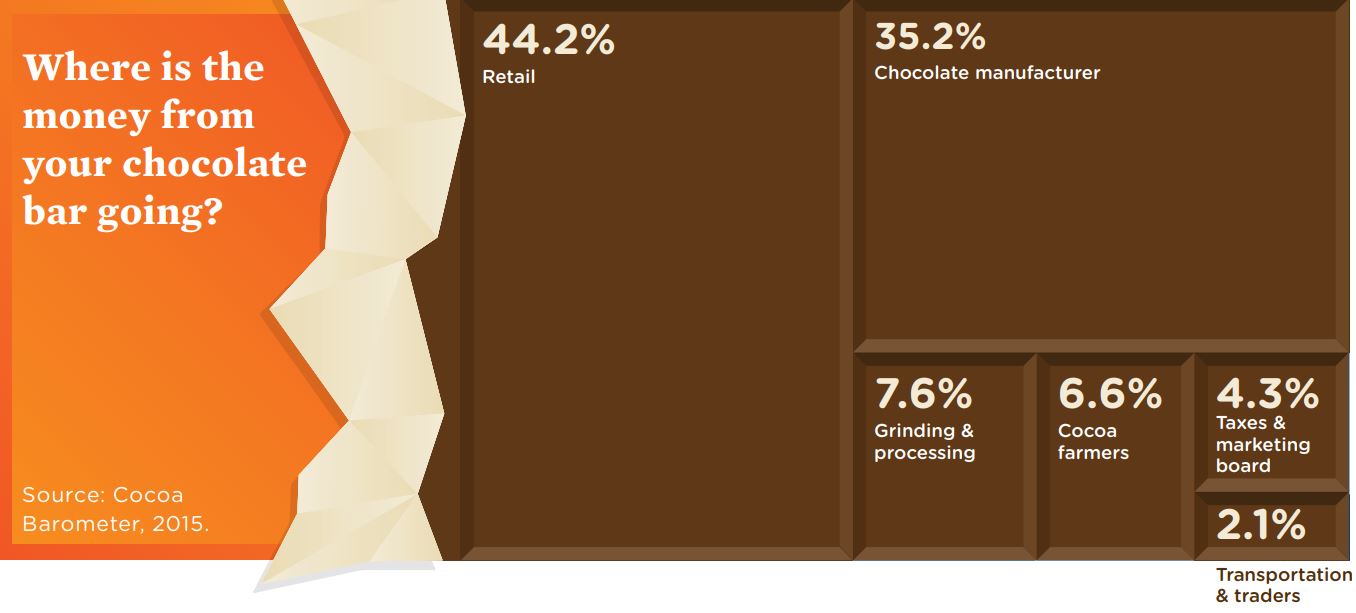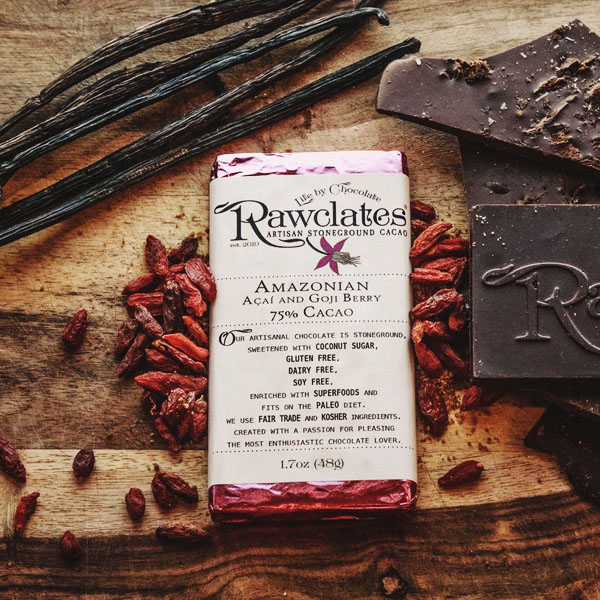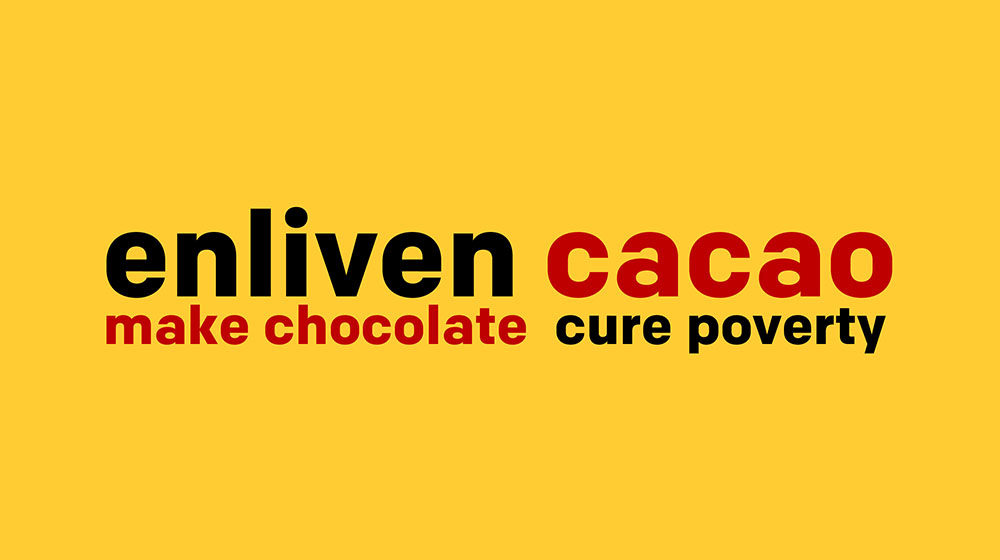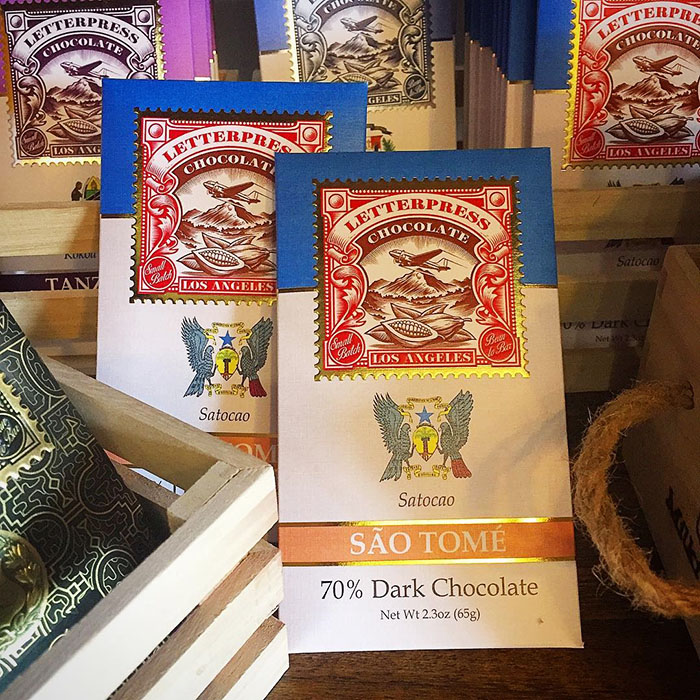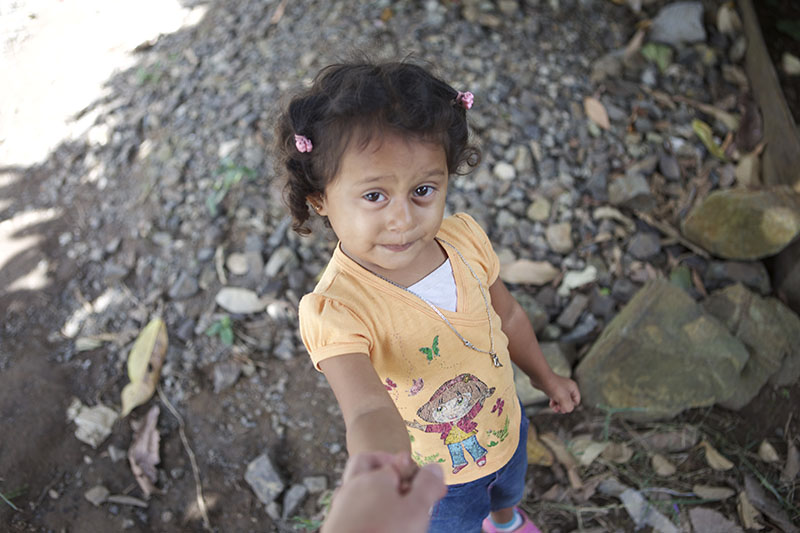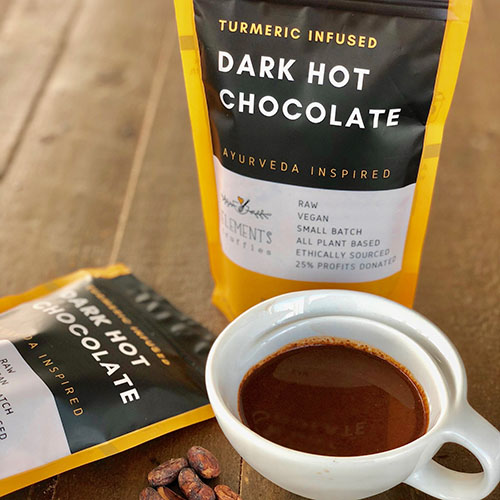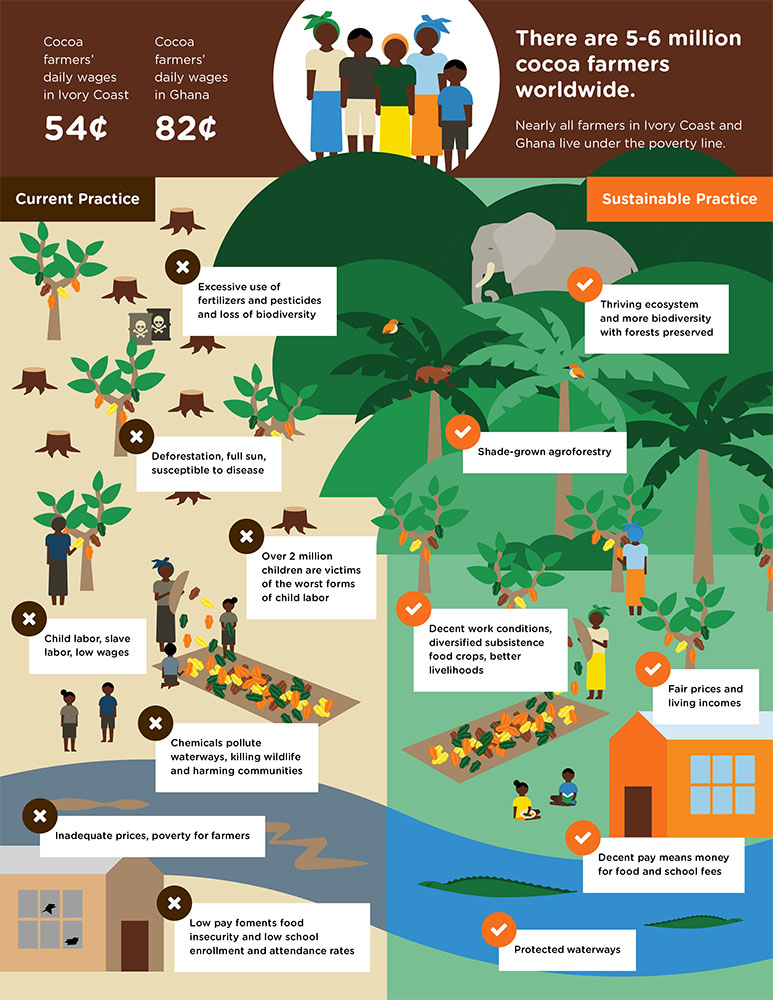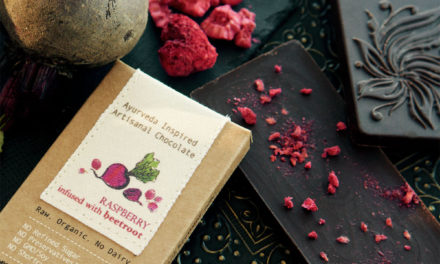by Eric Battersby
In the first part of this two-part series, we detailed the destruction of Africa’s rainforests, all in the name of cacao-related profits. Today we’ll look into the progress made, the potential roadmap already in existence to turn cacao around in Africa (and really the entire world), and most importantly, we’ll empower you to easily make a big difference yourself.
As you learned in part one, cacao farmers continue to illegally destroy forests on protected lands, including national parks, in Ghana and the Ivory Coast. A nonprofit campaign organization called Mighty (referred to here as Mighty Earth, for their website MightyEarth.org), which is actually a project of the 501c3 nonprofit called the Center for International Policy, put in some serious investigative work in Africa recently, uncovering many of the problems you read about last issue.
Mighty Earth’s outstanding work openly shined the spotlight on the imminent chocolate disaster, and we already discussed the high price our planet and wildlife will have to pay if we don’t turn things around quickly. Now let’s take a look at the human cost associated with improper cacao farming and distribution structures.
The Human Cost
First of all, we need to understand the situation for your typical cacao farmer. Outside of your bean-to-bar chocolate makers and those truly focused on direct or fair trade, the numbers for cacao farmers aren’t pretty. Of the money paid for a typical, “big chocolate” chocolate bar, only 6.6% goes to the cacao farmer, and in 1980, an average of 16% went to the farmer, which further accentuates the serious corruption and neglect in the cacao supply chain. That puts nearly all cacao farmers in Ghana and the Ivory Coast below the poverty line, and as we’ve detailed previously (see Big Chocolate’s Ugly Secret), contributes to child and slave labor as well.
In sharp contrast, 35.2% of each bar goes to the manufacturer, and 44.2% goes to retail. Indeed, the cacao farmers make the lowest percentage of any of the main cogs in the cacao chain, with only transportation & traders making less.
You might think that such a low percentage would result in farmers finding a new profession, but in impoverished areas, cacao farming still sits as a more viable option than most. So under current conditions, doing whatever it takes to keep farming cacao wins the day, despite the fifty to eighty-four cents per day pay range.
Visit the Holiday Chocolate Shop for Charity!
This situation feeds the problem, and results in broken laws, unenforced regulations, and the turning of a blind eye by all those involved, including the big chocolate companies themselves. When you learn about passionate bean-to-bar and direct trade chocolate makers, this is a big reason why they’re so dedicated to the process every step of the way. Step one – take care of the farmers, and the farmers will take care of you!
Instead, neglecting the first link of the chocolate chain puts the entire system at risk, and as you can see on the left side of Mighty Earth’s graphic below, here’s what we see today in Africa.
Mighty Earth shows what a difference the right practices can make
In addition to the labor issues and deforestation, excessive use of fertilizers and pesticides, a loss of biodiversity, put the entire system at risk, while a serious lack of food security and proper education for children continues to oppress African farmers and their families. We need a better system. Period.
The High Carbon Stock Approach and the Palm Oil Roadmap
As you can see from a more pie-in-the-sky point of view, the right side of the above graphic offers a much better alternative. We already see this model working in smaller segments with bean-to-bar chocolate, but can it translate to big chocolate as well? Thankfully, other industries offer a potential blueprint for success, and as Mighty Earth points out, one of those industries already crosses over with big chocolate – palm oil.
A big part of the difference underway in the palm oil industry centers on the High Carbon Stock Approach, as detailed at http://highcarbonstock.org/. In short, here’s the big key – when companies seek to expand their current cacao-growing land base, they focus on the millions of land acres already deforested previously. Per the High Carbon Stock website –
“Tropical natural forests hold large stores of carbon and biodiversity, and are critical for millions of indigenous and local peoples who depend on forests for their livelihoods. However, this carbon is released and biodiversity is lost when these forests are cleared…
“The High Carbon Stock (HCS) Approach is a methodology that distinguishes forest areas for protection from degraded lands with low carbon and biodiversity values that may be developed. The methodology was developed with the aim to ensure a practical, transparent, robust, and scientifically credible approach that is widely accepted to implement commitments to halt deforestation in the tropics, while ensuring the rights and livelihoods of local peoples are respected.”
Beyond that, the HCS methodology also “respects local community rights through its integration with enhanced Free Prior and Informed Consent (FPIC) procedures, and respecting community land use and livelihoods.” You may wonder if it’s a complicated process, one that might be holding companies back from implementing it in Africa, but that’s not the case –
“The HCS Approach is a breakthrough for plantation companies and manufacturers who are committed to breaking the link between deforestation and land development in their operations and supply chains. The approach represents the first practical methodology that has been tested and developed in active concessions in Asia and Africa with input from a variety of stakeholders. It is a relatively simple tool that plantation companies can use for new developments while ensuring that forests are protected from conversion.”
In other words, it’s a slam dunk, yet HCS remains a stranger to the cacao industry. Think perhaps cost factors are preventing HCS adoption in the cacao supply chain? Not likely, as per Mighty Earth, based on similar work in other industries, implementing these more responsible methodologies should only increase a chocolate bar’s cost by a few pennies. In addition, they found that moving to deforestation-free agricultural frequently uncovered new efficiencies in the process, actually resulting in increased profitability. Show me a big chocolate company that’s not interested in those two words…
As an added bonus, shifting to a more sustainable process can also result in increased market share, particularly when chocolate makers seek out more environmentally responsible cacao. It’s essentially the rare win-win-win-win, where a little foresight and upfront effort rewards all parties involved. When you throw in the fact that plenty of companies (including Nestle, Mondelez, Mars, Ferrero Rocher and Hershey) already use the HCS for their palm oil purchases, it’s easy to see just how neglectful the big chocolate industry continues to be in Africa.
A Path to Sustainability
Right now, farmers feel the need to clear forests in order to grow cacao in full sunlight, which provides a boost to productivity in the short term. Cacao naturally grows best long-term under the forest’s protectiion, however, which as Mighty Earth notes, “promotes nutrient cycling, erosion control, water regulation, nitrogen fixing, crop pollination, and reduced weed growth.” In the long run, shade-grown cacao shows higher average productivity.
For all the great research Mighty Earth did on deforestation and cacao, perhaps the most crucial part to their work lies in the five clearly-formulated principles they crafted for the chocolate industry to follow. Between the HCS work done in other industries and Mighty Earth’s diligent leg work on cacao, the only two words standing between a brighter tomorrow created by big chocolate itself are caring and effort. Below are the five principles, and as we did in last issue, we strongly encourage you to read Mighty Earth’s full document, Chocolate’s Dark Secret , which also includes a few sources cited in their five principles (click here to view):
PROTECT FORESTS, PERIOD
The chocolate industry should end deforestation by immediately ceasing purchasing from suppliers who engage in clearance of High Carbon Stock and High Conservation Value lands. The industry should shift its supply to shade-grown cocoa.
TRANSPARENCY AND TRACEABILITY
Major chocolate companies should make available online the identities and locations of their suppliers. Governments should also recognize and improve land tenure (including through community and farmer education), disclose any funds government agencies or personnel receive from the cocoa industry, and review cooperative designations.
JOINT ACTION
The cocoa industry and governments should pool resources to monitor deforestation and enforce compliance with zero deforestation policies. The industry can use the successful Brazilian Soy Moratorium as a model.
HUMAN RIGHTS
Cocoa expansion should be done in ways that protect indigenous community rights, including the right to free, prior, and informed consent (FPIC). The chocolate industry and affected governments should also ensure that cocoa farmers receive a living wage, that forced labor is prohibited, and action is taken to discourage illegal child labor. Use of hazardous pesticides should be immediately eliminated.
RESTORE IVORY COAST’S FORESTS
Despite the near-total destruction of Ivory Coast’s classified forests and the damages to the country’s national parks, there are still more than 20 protected areas that remain forested to some degree, and which can and should be restored.
Not Quite There, However…
Unfortunately, even the best laid plans mean little if they’re not followed by solid effort. We mentioned palm oil as an example to follow for chocolate, but even while I worked on this article in between the October and November issues, bad news hit on the palm oil front – bad news for forests, animals, and three big chocolate companies.
As of a late October 2017 report in The Gaurdian, Nestlé, Mars, and Hershey are all failing to meet commitments. Here’s a quote in the report, from Laurel Sutherlin, a spokesman for the Rainforest Action Network –
“For too many years, Nestlé, Mars and Hershey have cherry-picked their [palm oil] targets and then moved the goalposts when they don’t achieve them. There’s just no further room for error to prevent the extinction of tigers, orangutans and elephants.”
With varying targets between 2013 and 2016, all three companies pledged to stop using “conflict palm oil” (from deforested Indonesian jungles) in its supply chain, but here we are in late 2017, and none of the three reached its goals. Although the news certainly is disheartening, it really just hits home the importance of the number one source for change in all this – the educated, proactive consumer, otherwise known as… YOU!
You’re in the Driver’s Seat
We learn a harsh lesson, but a vitally important one in all this – promises are one thing, actions completely another. We just saw it in palm oil, and we continue to see it in chocolate. Indeed, before Mighty Earth published their findings, they reached out to seventy chocolate companies, sharing results from their investigation and research. According to Mighty Earth –
“In their responses, none of the companies denied sourcing cocoa from protected areas or disputed any of the facts we presented. Some companies even acknowledged the need for further action, but few outlined specific steps they would take.”
As we also mentioned last issue, a big meeting of the minds takes place this month thanks to Prince Charles of Wales, in which thirty-four leading chocolate companies will work to finally create a plan aimed at ending deforestation in the cacao industry. Whether or not anything substantial, or of any urgency for that matter, will come out of that meeting, we don’t know, but as it stands right now, we’re seeing way too little movement. For all the talk of big chocolate stepping up and doing the right thing, the simple truth is that they’ve neglected to do so for years on end.
How can we facilitate the change… how can we turn the screw so to speak? Thankfully, that’s perhaps the simplest of all these solutions. Each and every one of us can easily take the first step by personally boycotting all chocolate that fails to meet ethical and sustainable standards (see our list of companies at the end of this article). No one needs to support chocolate that puts children, farmers, endangered species and the environment all at risk, and that’s exactly what you’re standing up for by openly boycotting the big chocolate companies failing to put those four important pieces to our existence before the almighty dollar. A personal boycott speaks volumes.
For the second step, simply spread the word. It’s easy to speak up by sharing your own personal story, just make sure to do so without attacking another person’s actions (or lack thereof). Tell your friend or family member what you’ve learned, share a few details on the seriousness of the situation, and then tie that into your own personal WHY – why did you feel the need to take a stand?
Perhaps it’s from a personal experience firsthand… or if you’re a parent, maybe you simply want to raise your own children by example, knowing full well that you’d never buy chocolate that resulted in your own child’s forced labor. Whatever your own personal conviction is, share it, and share it in a positive way, without criticism.
Remember, most people won’t already know what you know, so in many cases, it’s not as if they’re intentionally a part of the problem. Offer to share your resources, to send them this article even, and do so in an empowering and positive fashion. Saving the world – it’s the cool thing to do… and it always will be!
If you want to take a third step, share your boycott with the company itself. Write a letter or an email… make a phone call… whatever your preference, and let the chocolate company know that you refuse to spend your money on tainted chocolate. Each voice they hear, one by one, starts to make a difference. Like Til Tuesday sings… voices carry.
Finally, if you feel so passionate about the situation that you want to dive all the way in, join an organization actively fighting for child freedom and healthy rainforests, or start your own, whether it’s a local club or a full-fledged nonprofit. As we say over at my own nonprofit, Change the World Films (www.walkamileproject.com) –
“People who say it cannot be done should not interrupt those actually doing it.”
The Big Chocolate List
As Rene Zimbelman mentioned last month in her article on chocolate and Halloween, Green America currently provides a scorecard on chocolate companies (click here to view the scorecard). I followed this up with a little extra research and created a three tier rating chart. Some of these companies are worse offenders than others, with one clearly leading the way, but understand, they are ALL currently contributing to the problem.
These are the companies you may want to boycott, at least on a product-by-product basis, as they may be improving sourcing on some, but not all, of their products. If you only buy products for which these companies are clearly making an effort, that will also speak volumes.
Here’s the list, in order of worst to… well… least worst!
TIER 1 – The Worst Offender
- Godiva – according to Green America, they just don’t seem to care about anything, whether it be quality ingredients, ethics, or sustainability. The only minor positive on Godiva’s scorecard? The company pledged to be “100% sustainable” by 2020, without specifics or 3rd party certification. Yes, Godiva truly is in a class all its own… at the bottom.
TIER 2 – Mid-Range
- Ferrero – Ferrero is at least part of the group meeting in Wales this month on deforestation. They also pledged to be 100% slave/child labor free by 2020, but the current state of their chocolate holds Ferrero down.
- Lindt/Ghirardelli – slowly moving forward, they sadly join Godiva as the only two companies pledging to be “100% sustainable” by 2020 with no specifics or 3rd party certification.
TIER 3 – The Best of the Worst
- Mondelez (owns Cadbury and surprisingly Green & Black’s) – although scoring low, they at least have all the issues on their radar, and signed the agreement we mentioned earlier as well.
- Hershey – a strange mix, Hershey held the highest percentage of slave-free chocolate for the big companies, yet still failed to commit to full certification by 2020.
- Mars – with the 2nd highest certification percentage behind only Hershey, plus with commitment to fully certify by 2020, Mars also appears to be on the upswing, but still falls significantly short.
- Nestle – not long ago, Nestle might have found itself near Godiva near the bottom here, but they’ve been on the upswing in recent years after a key change at CEO in June of 2016.
Of course we realize, as chocolate connoisseurs, we’re rarely buying these products to begin with, but remember, it’s up to us to spread the word to friends, family, etc. who may not be aware of the serious problems within the chocolate world.
And of course MightyEarth.com also provides some great, share-able resources. It’s a great place to start, and BIG THANKS to them for all the hard work they’ve already done on this important issue!
– Eric Battersby
REFERENCES
http://highcarbonstock.org/
http://www.mightyearth.org/wp-content/uploads/2017/09/chocolates_dark_secret_english_web.pdf
https://www.theguardian.com/environment/2017/sep/13/chocolate-industry-drives-rainforest-disaster-in-ivory-coast
http://www.mightyearth.org/chocolatesdarksecret
https://www.theguardian.com/environment/2017/oct/27/nestle-mars-and-hershey-breaking-promises-over-palm-oil-use-say-campaigners

NOVEMBER 2017 ISSUE PREVIEW

